In the fast-paced world of TV news I work in, where journalists rush from city to city, covering floods, tornadoes, earthquakes and other tragedies, the story I’m most grateful to have witnessed happened on October 12, 2010. I was part of the group of NBC journalists who after many sleepless nights in Chile’s Atacama Desert watched 33 men who were trapped in a collapsed mine for more than 2 months come out alive and smiling.
Word of the August 5, 2010 cave-in of the San Jose mine in Northern Chile traveled quickly. A group of men had gone to extract gold and copper in the mine and didn’t return home. Their relatives spread the news to make sure the world knew their loved ones desperately needed rescuing.
Families paced nervously on the arid terrain, hoping for signs of life. At 2,300 feet below, the men struggled to find a way to tell everyone they were alive.
Four days after the collapse, the country’s mining minister Laurence Golborne admitted that even if the miners had reached an underground shelter there would only be enough canned food to last 2 days. President Sebastian Pinera appealed to other countries including the U.S. for “any technology, any knowledge that will help us.”
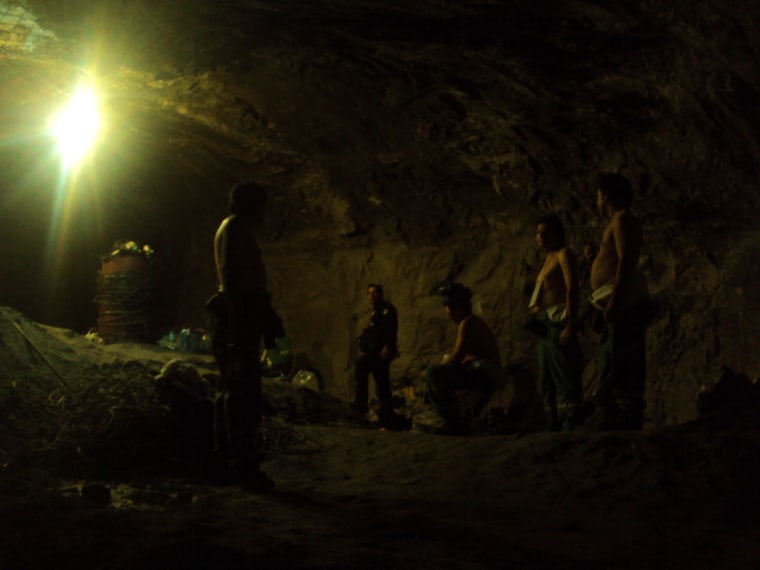
Reporters started trickling in with a sense of dread. But what we encountered was optimism among the anguished wives, parents and children of the missing men.
“I know he is alive,” I kept hearing relatives of the miners say with absolute conviction.
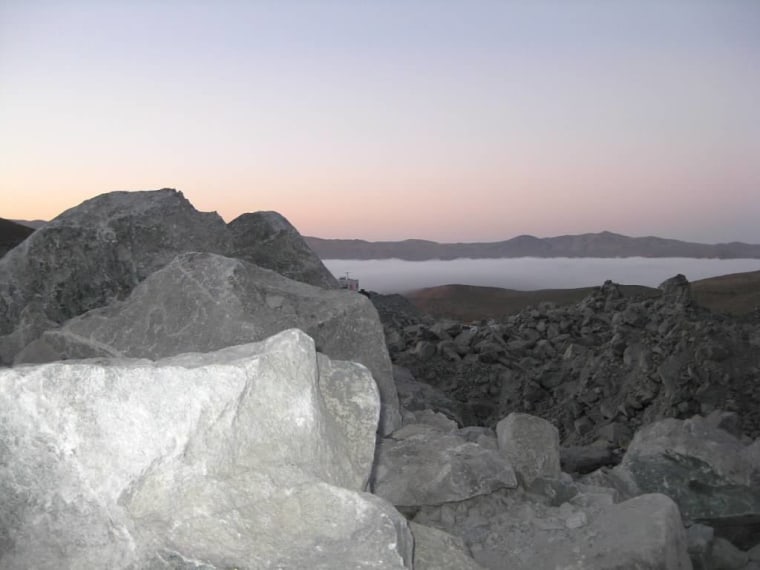
Journalists set up tents and RVs near the desert camp of hopefuls. In the Atacama’s merciless cold nights, candles would light up the pitch-dark rocky ground and prayers and hymns would intermittently break the sound of the drill trying to reach the miners.
On a Sunday, seventeen days after the cave-in, cheers, laughter and hugs spread through the camp. A new probe, the 8th attempt to reach the miners, managed to drill a 6-inch wide hole through the tough rock. Miner Mario Gomez, 63 years old, grabbed it and attached a piece of paper to the probe that read in bold red letters: “All 33 of us are fine and in the shelter.” He also sent a note telling his wife Liliana he loved her.
Apprehension after 17 days of bad news turned to joy, even among jaded journalists. We rushed to file live reports.
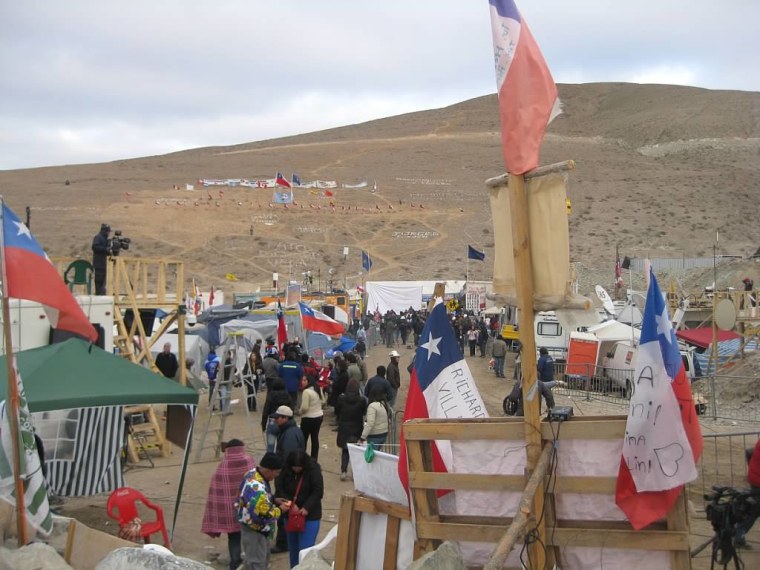
Later, when we questioned the engineers, we learned that even though the miners had defied the odds, it could be weeks or even months before anyone could open a big enough hole to pull a man to safety.
Yet the families of the miners remained hopeful.
They climbed one of the hills surrounding their camp and planted 33 Chilean flags, one for each of the miners. In the nearby town of Copiapo, where most of us went to get supplies, Catholic masses were held for the miners and their rescuers.
Drilling experts from all over the world arrived with different ideas on how to break through what rescuers had qualified as “the hardest rock on earth.” Three plans were selected and labeled A, B, and C. Golborne announced at the end of August that the rescuers would drill simultaneously because no one knew which one would work best. The miners had been trapped for 23 days.
Plan “B” was the rescue plan of Denver-area-based engineer Jeff Hart’s team. He and Matt Staffel were drilling wells for U.S. soldiers in Afghanistan’s desert when they heard about the trapped miners 10,000 miles away and rushed to Chile.
“This is the most difficult, most stressful well we’ve ever drilled,” Hart told us. They would break carefully through the hard rock so the unstable mine would not further collapse. “There are 33 lives at stake, you put an unbelievable amount of pressure on yourself to make it happen.”
Enormous trucks carrying construction equipment made their way daily through the dusty road to the mine as families cheered them on. Flags waved in impromptu celebratory parades. One of those machines would get their men out, they believed.
More notes from the 33 came up through a narrow hole. We learned they were all piled up in a space the size of a studio apartment. They had been rationing the little food they had down to a tablespoon of canned tuna per man to stay alive. They prayed every day, led by Jose Henriquez, the miner they nicknamed “El Pastor,” because of his strong Christian faith.
I kept an email that NBC News correspondent Kerry Sanders wrote to our colleagues in New York. “We so rarely see a happy ending unfold in real time, everyone is anxiously awaiting some good news,” Kerry wrote on October 11, 2010. There were reporters from 180 countries in our desert camp, more than 1500 journalists.
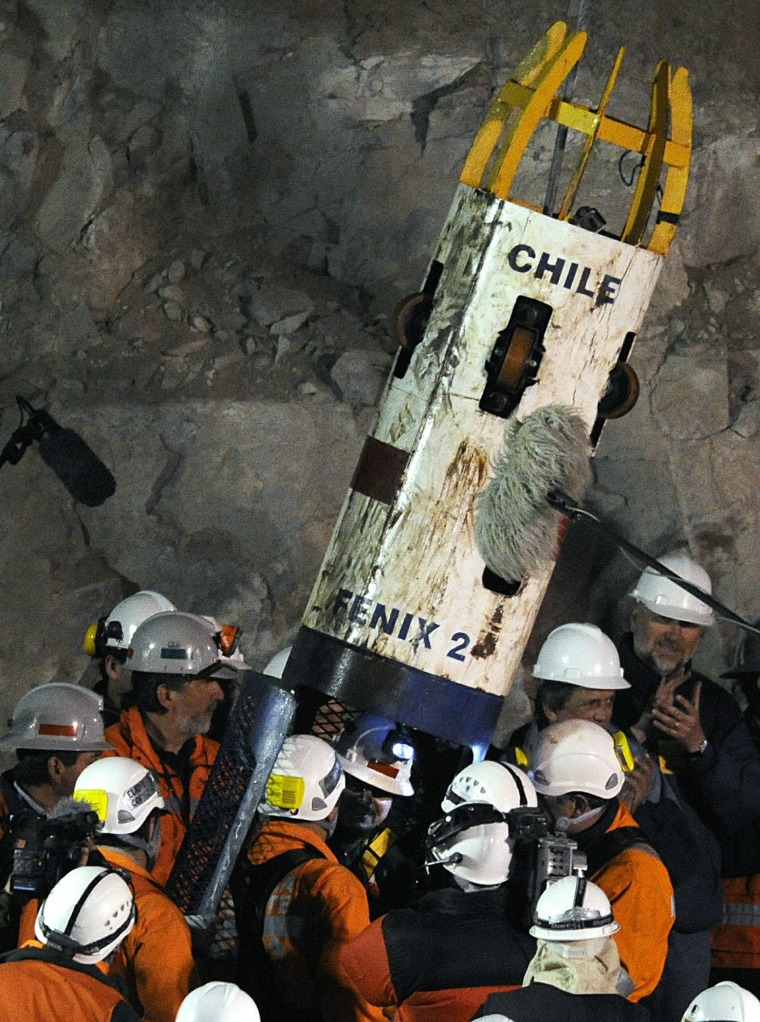
After a month of drilling, the Americans broke through to the miners’ shelter 2,300 feet below. Staffel and Hart came out to update reporters. They had not slept for 48 hours and you could see it on their faces. “I just thought ‘let’s get those guys out,’ ” Hart said.
Engineers then decided the only way to transport the miners to the surface safely would be to cradle them in a metal capsule. First they had to reinforce the hole with metal sleeves to prevent rocks from crumbling through the shaft and hitting the escape vehicle. That took days.
By October the little village of hope labeled “Campo Esperanza,” (esperanza means hope in Spanish) had a one-room wooden school, a communal kitchen, and a makeshift chapel. At night bonfires would keep the residents warm as the temperatures reached close to the freezing point on this barren desert thousands of feet above sea level. Some of the miners’ loves ones and journalists knew each other on a first name basis by now and we would share snacks and encouragement.
On October 12, a mix of anxiety and excitement grew in the camp. The word was the first rescue would be attempted tonight. The NBC team prepared for live reports.
Big screens had been installed in the camp so everyone could see the miners being pulled up. Nightfall arrived. Still no word. At 10 p.m. many of us wondered if the rescue had been postponed. Authorities would not answer our questions.
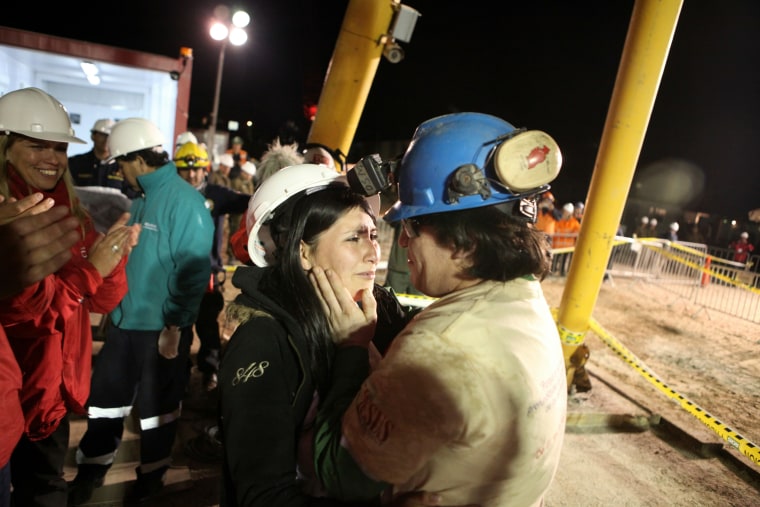
At 10:54 p.m., we saw the first miner enter the capsule “Fenix 2,” that had been lowered into the mine. We all held our breath. Would he make it to the surface okay? TODAY anchor Natalie Morales told our viewers live: “It will be the longest 10 or 15 minutes, I think, of each of these miners lives, that journey up to the surface.”
Florencio Avalos, 31, was the first miner to come up. He made the journey in 12 minutes. It was 40 degrees, but laughter, applause and hugs warmed the camp. I watched a man stare at the big screen quietly, while tears streamed down his wrinkled face, so moved he could not speak. Avalos had a wife and two children waiting for him.
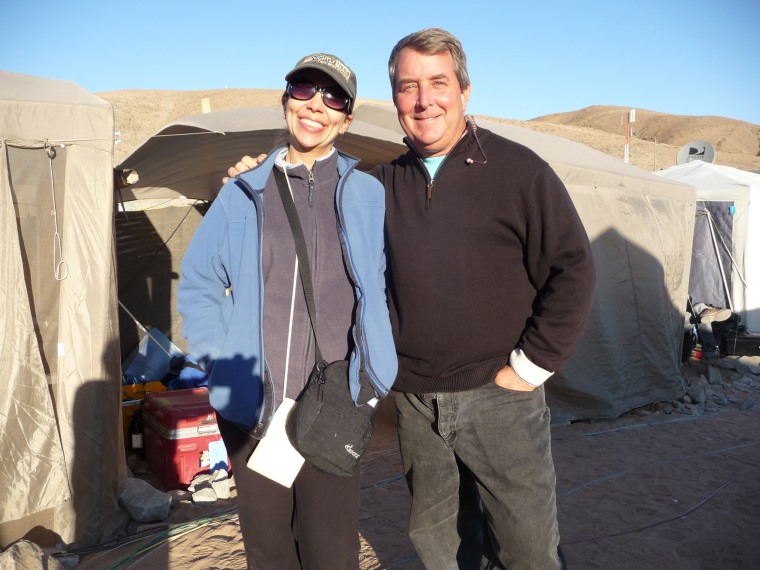
One by one the miners came up to safety overnight and into the afternoon of the next day. Their fight for survival had captivated the world. My NBC colleagues and I were lucky to be there that cold desert night to witness the warm and life-affirming ending. It's a story we will never forget.

Note: Erika Angulo, Kerry Sanders, Olivia Santini, Natalie Morales, Tony Zumbado, Jonathan Mossek, Jorge Pujol, Susane Becerra, Donna Paine and María Eugenia Alcón were part of the NBC team covering this story.
